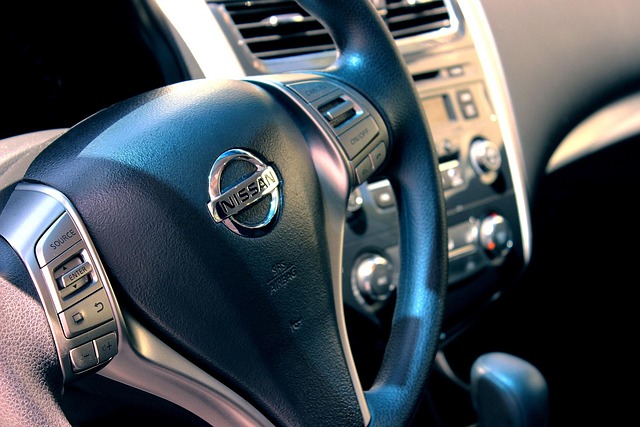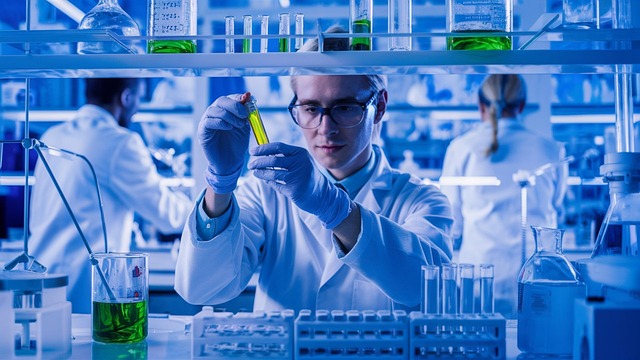Tesla Factory Specifications: Suspension, Steering, and Advanced Manufacturing
Tesla prioritizes innovation and performance in its vehicle design through advanced materials like a…….
In the rapidly evolving automotive industry, the concept of Tesla factory specifications has emerged as a pivotal factor shaping the future of electric vehicle (EV) manufacturing. This article aims to delve into the intricate details that define these specifications, explore their global impact, and analyze the various factors influencing their development. By examining historical context, technological advancements, economic considerations, policies, challenges, and successful implementations, we will uncover the multifaceted nature of Tesla factory standards and their role in revolutionizing the way vehicles are produced.
Definition: Tesla factory specifications refer to a comprehensive set of guidelines, protocols, and technical requirements that govern the manufacturing process of electric vehicles within Tesla’s production facilities. These specifications encompass every aspect, from initial design conceptualization to final assembly and quality control.
Core Components:
Design and Engineering: This phase involves creating detailed vehicle blueprints, electrical schematics, and software architectures. It includes advanced computer-aided design (CAD) systems and simulation tools for precision engineering.
Supply Chain Management: Tesla’s specifications dictate the selection of raw materials, components, and suppliers, ensuring quality and sustainability standards. They also outline the logistics and delivery processes for efficient assembly line operations.
Manufacturing Processes: Covering both hardware and software production, these specifications detail manufacturing techniques, machinery utilization, and automation levels. It involves robotics, advanced welding technologies, battery cell production, and electrical wiring procedures.
Quality Control and Assurance: Rigorous testing protocols, inspection methods, and performance benchmarks are defined to guarantee vehicle safety, reliability, and quality. This includes emissions testing, crash simulations, and endurance trials.
Historical Context: Tesla’s approach to factory specifications has evolved since its inception. Initially focusing on small-scale production for its first-generation vehicles, the company realized the need for standardized processes as demand grew. Over time, Tesla has refined its specifications to accommodate more complex vehicle architectures, such as the Model S sedan and the Model X SUV, incorporating advanced driver assistance systems (ADAS) and autonomous driving capabilities.
Tesla’s factory specifications have had a profound global impact on the automotive industry, leading to several key trends:
Electric Vehicle Revolution: Tesla’s specifications have been instrumental in accelerating the transition to electric mobility worldwide. Many traditional automakers have followed suit, adopting similar standards and processes to expedite their EV model rollouts.
Standardization vs. Customization: The global automotive industry is witnessing a shift between standardized production processes and customizable options. Tesla’s specifications represent a lean manufacturing approach, while some competitors opt for greater flexibility to cater to diverse market preferences.
Regional Adopation: Different regions have embraced Tesla-inspired specifications at varying rates. Asia-Pacific countries, particularly China, have shown a strong inclination towards adopting advanced manufacturing practices, mirroring Tesla’s standards. In contrast, certain European nations are still refining their regulations to align with these specifications.
Supply Chain Disruptions: Tesla’s global supply chain strategy, as outlined in its factory specifications, has influenced the resilience of EV manufacturing. The COVID-19 pandemic highlighted the importance of diversified suppliers and robust logistics networks, prompting automakers worldwide to reevaluate their sourcing strategies.
Market Competition: The introduction of Tesla’s standardized specifications created a new benchmark for quality and performance. Traditional automakers had to adapt by investing in research and development (R&D) to match these standards, leading to intense competition in the EV market.
Facilities Upgrades: To align with Tesla’s specifications, numerous automakers have invested heavily in modernizing their manufacturing plants. This includes acquiring advanced robotics, implementing lean production methods, and constructing state-of-the-art assembly lines.
Battery Cell Production: The specifications emphasize vertical integration of battery cell production, leading to significant investments in this critical component. Companies are establishing dedicated facilities or partnering with specialized manufacturers to secure high-quality battery cells.
Robotic Assembly: Tesla’s factory specifications heavily rely on robotics for efficient and precise assembly. The company’s use of advanced robotic arms and AI-driven systems has set industry benchmarks for automation, enabling faster production rates and reduced labor costs.
Welding and Joining Technologies: In-line laser welding and ultrasonic welding are among the technologies adopted to ensure structural integrity while minimizing weight. These advancements contribute to improved vehicle performance and fuel efficiency.
Battery Cell Design: Tesla’s specifications drive innovation in battery cell design, focusing on high energy density, rapid charging capabilities, and long-term durability. The company’s proprietary battery management systems optimize cell performance and safety.
Solid-State Batteries: Research and development efforts are directed towards solid-state batteries, which offer higher energy density, faster charging, and enhanced safety compared to traditional lithium-ion cells. Tesla’s specifications play a crucial role in advancing this technology.
Safety Regulations: Tesla’s factory specifications adhere to stringent global safety standards set by organizations like ISO (International Organization for Standardization) and SAE (Society of Automotive Engineers). These standards cover vehicle structural integrity, crashworthiness, and active safety systems.
Emissions Controls: Many countries have aligned their emission regulations with the European Union’s (EU) strict norms, influencing Tesla’s specifications for tailpipe emissions reduction and the development of zero-emission vehicles.
China: The Chinese government has implemented comprehensive incentives and regulations to promote EV manufacturing. These include tax breaks, subsidies, and stricter environmental standards, aligning with Tesla’s sustainable production goals.
United States and Europe: Regulatory bodies in these regions are increasingly focusing on safety, emissions, and data privacy aspects, prompting automakers to incorporate Tesla-inspired specifications into their production processes.
Scalability: As demand for EVs surges, scaling up manufacturing while maintaining quality standards remains a significant challenge. Tesla’s specifications must adapt to accommodate higher production volumes without compromising consistency.
Supply Chain Resilience: Global supply chain disruptions, as evidenced during the pandemic, highlight the need for more robust and adaptable systems. Diversifying supplier networks and securing raw materials are critical aspects addressed in Tesla’s specifications.
Sustainability: While Tesla promotes sustainable practices, critics argue that the environmental impact of battery production and end-of-life recycling requires further attention. The company’s specifications include initiatives to address these concerns, such as closed-loop recycling programs.
High Production Costs: Critics claim that Tesla’s lean manufacturing approach may lead to higher initial production costs. However, the long-term benefits of reduced waste and improved efficiency outweigh these short-term expenses.
Job Displacement: Automation concerns have sparked debates about potential job losses. Tesla addresses this by retraining and reskilling its workforce for new roles in advanced manufacturing and technology development.
Regulatory Burdens: Some automakers express concern over stringent regulations, suggesting that standardized specifications could alleviate some of these burdens. Balancing regulatory requirements with industry innovation is an ongoing challenge.
The original Gigafactory in Nevada serves as a prime example of Tesla’s factory specifications in action. Key achievements include:
Tesla’s Shanghai Gigafactory (Gigafactory 3) exemplifies successful localization of production processes while maintaining global specifications. Notable aspects include:
Advanced Materials: The automotive industry is exploring the use of advanced materials, such as carbon fiber composites and lightweight metals, to enhance vehicle performance and reduce weight. Tesla’s specifications will continue to evolve to incorporate these materials effectively.
Autonomous Vehicles: As autonomous driving technology matures, Tesla’s factory specifications will need to integrate advanced driver assistance systems (ADAS) and autonomous driving capabilities into vehicle design and production processes.
Global Expansion: Tesla’s manufacturing footprint is expected to expand further, with new Gigafactories in Europe and other regions. This expansion will require localized adaptations of its factory specifications while maintaining global quality standards.
Sustainable Practices: There is a growing emphasis on closed-loop recycling and the use of renewable energy sources in production processes. Tesla’s commitment to sustainability will shape industry trends and regulatory frameworks.
Tesla factory specifications represent a revolutionary approach to electric vehicle manufacturing, influencing global automotive dynamics. From historical evolution to international impact, economic considerations, technological advancements, policies, challenges, and successful case studies, this comprehensive overview highlights the multifaceted nature of these specifications. As the automotive industry navigates the path towards sustainable mobility, Tesla’s specifications will continue to shape the future, ensuring high-quality, efficient, and technologically advanced electric vehicles for a changing world.
Q: How do Tesla’s factory specifications differ from traditional automotive manufacturing?
A: Tesla’s approach emphasizes standardized processes, automation, and vertical integration, contrasting with traditional methods that often involve more customized, labor-intensive production lines.
Q: What role does battery cell production play in Tesla’s specifications?
A: Battery cell production is a critical component, as Tesla specifies the design, materials, and manufacturing processes to ensure high energy density, safety, and performance.
Q: Can Tesla’s factory specifications adapt to meet regional demands?
A: Absolutely. While global standards are maintained, Tesla’s specifications allow for localized adaptations to cater to diverse market preferences, regulatory requirements, and supply chain considerations.
Q: How do Tesla’s specifications address environmental sustainability concerns?
A: Tesla incorporates initiatives such as closed-loop recycling programs, sustainable sourcing of raw materials, and the use of renewable energy in its factories to minimize the environmental impact of manufacturing processes.
Q: What are the potential challenges for automakers adopting Tesla-inspired specifications?
A: Challenges include scaling up production while maintaining quality, securing reliable supply chains, investing in advanced technologies, and adapting to evolving regulatory landscapes.

Tesla prioritizes innovation and performance in its vehicle design through advanced materials like a…….

Tesla ensures every vehicle meets stringent factory specifications through a meticulous multi-step p…….

Tesla prioritizes safety in its factories with meticulous Tesla factory specifications designed arou…….